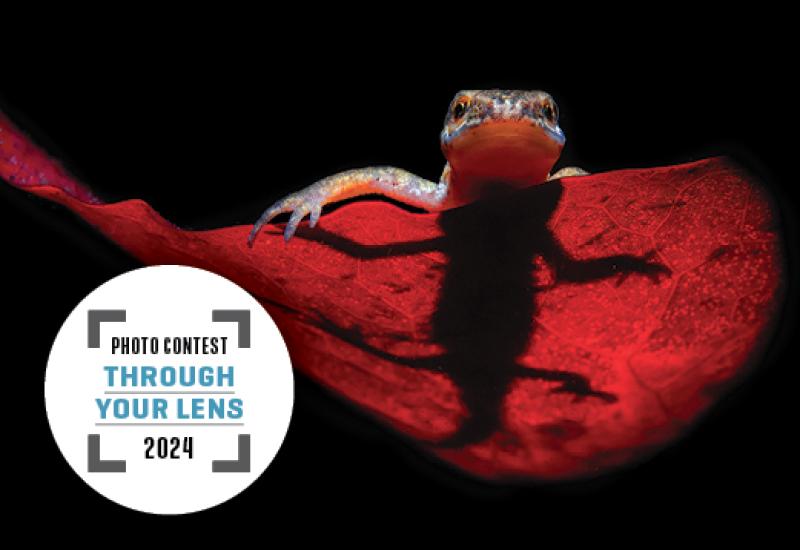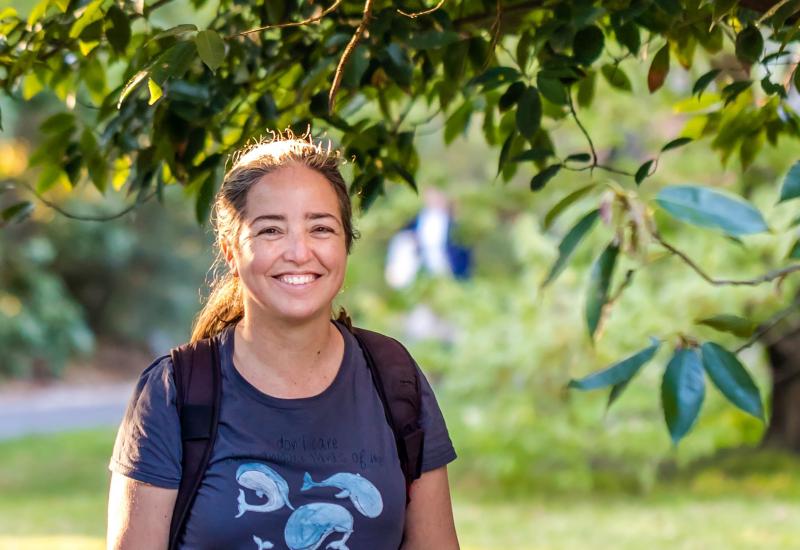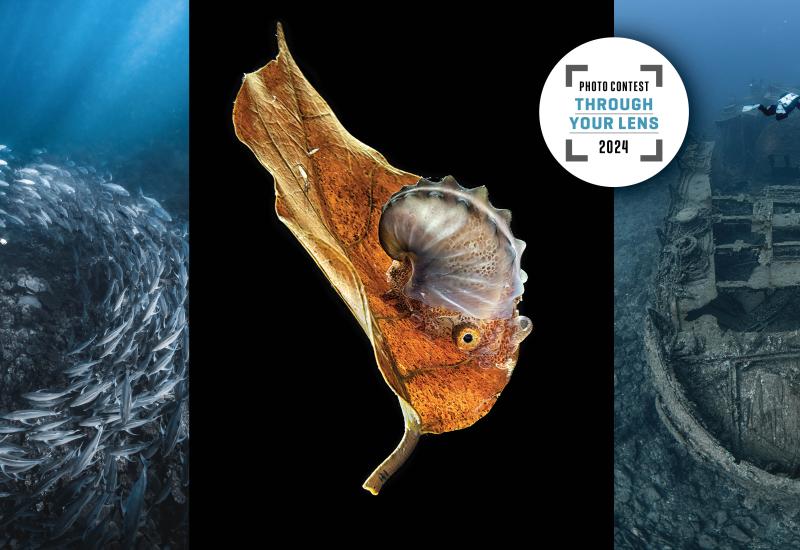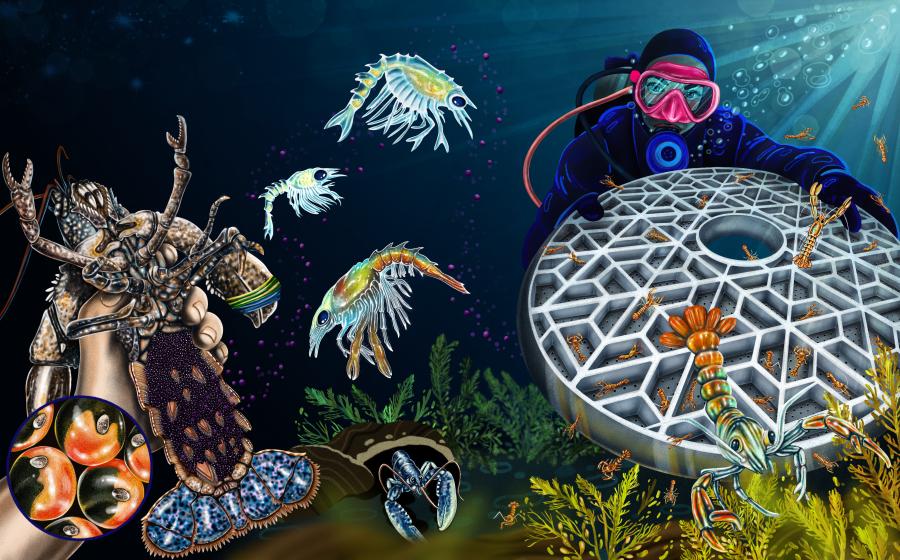Underwater Photographer Spotlight: Conor Culver
Conor Culver's surreal photographic creations first caught the eye of Scuba Diving's editors in 2014 when he entered the Through Your Lens photo competition for the first time. Since then, we have been fascinated by his underwater photography and creativity.
Behind-the-Shot: The Ambassador

Conor CulverThe Ambassador
CC: This was one of the few images I had planned out in my head before I ever took the photos of the banded sea snakes. Knowing I would see them on my trip to Indonesia, I began to think about how they are similar to divers. They rise above for air, to return to the reefs below, just as divers do. As divers, we are ambassadors to the oceans and reefs. We show the world what is beneath the waves with our images and I wanted this image to illustrate that while using an animal like the banded sea snake. Before my trip, I wondered if I would be lucky enough to get a straight on headshot. On my trip, my very first encounter with a sea snake was one I'd never forget. The snake backed out of a coral head and began to swim right at me. The snake's head came right into the port of my lens allowing me to get the headshot that would lead to this image. The snake then wrapped around my right side strobe for a couple seconds, looking at me, then going back up to the surface. I could not believe the first time I came across a sea snake, not only was that encounter incredible, but I got the exact head shot I needed for this photo.

Conor CulverCloud Filter
Q: How long have you been a scuba diver/what’s your certification level?
CC: I have been diving for 19 years and I am currently a PADI Divemaster.
Q: How long have you been an underwater photographer, and how did you get started?
CC: I have been taking underwater photos since I was 16 (for 15 years) and first started with a small Sea & Sea Mx-10. The first place I took photos was on the Caribbean island of Dominica. My Dad handed me down his Mx-10 after Dominica for future diving, while he upgraded to a new camera. The next trip I would take was to Fiji, where I learned the battles of being stuck with just 36 exposures. I'll always remember waiting for the film to develop to see how my photos turned out. It was great to start on film since it was always a challenge, but I definitely prefer digital now. Especially with the work that I create today.
Tell us about your camera setup.
Camera: Nikon D800E
Housing: Ikelite
Lens(es): 60mm Macro, 105mm Macro, and a 16-35mm wide angle
Lights/Strobes: 2 DS-160 Sunstrobes

Conor CulverArt at the base of a tree
Do you prefer to shoot on scuba or freediving?
CC: I prefer Scuba, but I have done freediving for photos of sailfish and whale sharks in Isla Mujeres and also spinner dolphins in Hawaii. Whatever it takes to get the shot, either freediving or scuba will do. I just love to be in the water.
Q: What is your favorite photo-sharing platform?
CC: I have a Facebook page, Twitter, and Instagram. I just created an Instagram account about a month ago so I'm just starting out on that platform. I don't have many followers on there, so follow me!
Follow Conor Culver | Facebook | Twitter | Instagram |
Q: What are three of your favorite social-media accounts to follow?
CC: Anything with underwater photography! I also follow many of my favorite artists and fellow underwater photographers.
- Jerry Uelsmann (on Facebook)
- Scuba Diving Magazine
- Diving_Photography (Instagram)
Q: What hashtag best describes your underwater photography style?
CC: #UnderwaterSurrealism or #UnderwaterSurrealist would be the two best hashtags that I go with for my style of work

Conor CulverInking through the universe
Q: What or who inspires you?
CC: I have always been drawn to surreal images; images that challenge my perception of reality. My favorite photographers are Jerry Uelsmann, Maggie Taylor, Man Ray, Kerry Skarbakka, Robert and Shana ParkeHarrison, Ben Goossens, and Tom Chambers. Many of the early surrealists like Rene Magritte, Salvador Dali, Max Ernst, and Marc Chagall have also had profound impacts on myself as an artist.
For early personal inspirations of my photography career came from my time at The University of Colorado at Denver. They taught me so much about photography; exposing me to the works of Jerry Uelsmann, Maggie Taylor and all the artists I mentioned above. I'll never forget my class called Introduction to Digital Photography, a class where I first opened Photoshop (then CS3). I had an amazing professor named Rayna Tedford that showed me what Photoshop can create. She steered me to multiple sources online, magazines, and books to help me learn the program more in depth so I could create surreal images that had always inspired me. It was in this class that I really started to experiment with the program that would eventually lead to Underwater Surrealism. I remember one night the entire class went out for dinner. She asked me why photography was not my major, since at that point in time photography was just a minor. I told her that I wasn’t sure if I was good enough in photography to pursue it further than just a hobby. She convinced me to change it to my major and I never looked back. CU Denver trained me and the professors there have all inspired me.
Q: What do you love most about your work?
CC: I love being able to travel, to dive, and to experience new cultures. My work brings me to exciting and new places. My favorite part of the process for Underwater Surrealism is when I am finished with a new photo. Seeing the images come together in the end never ceases to amaze me.
Q: Please tell us more about your process, including post-production?
CC: The majority of my photos start immediately after I get the photo of the underwater animal. I begin to brainstorm what I can do with the image and what it would mean. Every image has it's own meaning that is particular to that specific animal. I cut the animal out by using the pen tool or masking depending on the animal. Masking works best for fish because their fins and tails do not have hard edges. With masking you can adjust the opacity with the brush for the fins, but for images of animals like sharks that have hard edges, the pen tool works best. Then I place them into the scene on land, match the lighting by dodging and burning, and then create the shadows. After that I experiment with different tools and plugins till I find a result I like. When I am close to being finished I just let things happen in Photoshop and try different filters or edits. You can always go back if you don’t like the results and do it again and again a different way. The very last step is placing a texture over the entire image using the blending modes. It can be a very subtle texture or a harsh texture depending on how it compliments the image. This will help bring the image together and tricks the eye into believing the image is real.
Q: What’s been the biggest challenge and/or your most rewarding moment?
The biggest challenge in my work so far was creating the image that took first place in your Conceptual Category for the 2016 Through Your Lens competition. The image is called Poison Tree and took months to clip out the school of stripped eel catfish and mask them into the tree. It was by far my most difficult image I've created but I was amazed by the end result. I always try to challenge myself.

Conor CulverPoison Tree
Q: What was your favorite trip and why?
CC: My favorite trip was going to Indonesia last year. It was a liveaboard that started in Ambon and made its way down to Alor, diving a new island every day. I also went to Bali for a few days and toured around the temples and did some muck diving there. I loved Indonesia. The people are amazing and the diving is incredible. My work is very much about finding different animals and creatures in the ocean and Indonesia's reefs are the most diverse in the world. Every dive I was finding something amazing to shoot. Even a year later I still have numerous photos to create from that trip. One day, I will go back to Indonesia. I really want to dive Raja Ampat.
Q: Where do you most want to go?
CC: When this is released, I will be there! I am going to Socorro for new work and can't wait to be in the water. Excited to see the mantas, dolphins, sharks and hopefully whales. Also, the Galapagos Islands are a major place I have always wanted to dive. I've heard so many great things about the Galapagos!

Conor CulverSelf-portrait.
Q: Any advice for budding photographers?
CC: My advice for new photographers is to keep shooting and keep learning. Try new things with your camera and try new tricks in Photoshop. There are resources everywhere to learn whatever it is you want to accomplish. Also, if you want to manipulate your images, GO FOR IT! I've seen so many photographers shoot down manipulation as if it is a bad thing. Photoshop is your digital darkroom and should be an extension of your camera. Artists manipulated in the darkroom with film like Jerry Uelsmann who is all analog and no Photoshop or Oscar Gustav Rejlander who was manipulating photos in the late 1800s. It's not a new concept like many people think, they just used the darkroom or other means to manipulate their work. So to the newbies, learn Photoshop just like you would learn your camera. I've come across fellow photographers who think they are better because they don't manipulate their images. If you want the purist view for your images, that’s awesome! And if you want to create surreal work then do it! In my opinion, neither is better; art is subjective and do what you think is best for your own work.
View more of Culver's work here.










